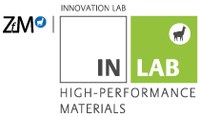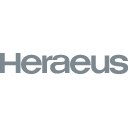Optimization of the processing of solder and silver sintering pastes for connecting and joining high-performance components
- Optimization of the processing of solder and silver sintering pastes for connecting and joining high-performance components
-

Partner: Heraeus Electronics
GaN-based or SiC-based high-performance electronics are of extreme importance, especially in the field of electromobility. In such high-current applications, the Joule heat quantities produced due to the electrical resistance of an electric component must be dissipated in a controlled manner in order to comply with the specified operating parameters, to increase the service life of the component and, in particular, to avoid destruction of the component during operation. Both thin-film components on chips and volume material components are used on circuit boards as parts of the electrical circuitry, e.g., in in electric automobiles. The mounting technology is decisive for good heat dissipation of the components to the circuit board. Soldering and sintering techniques are used for this purpose. Both the solders and the sintering pastes (based on silver or copper) are themselves complex composite materials whose function is not only determined by their composition, but is also strongly influenced by the joining process itself. Structural aspects of the connection between the component and the circuit board on the microscale (chemical composition distribution) and mesoscale (grain formation, segregation, micro-cracks, voids, etc.) strongly influence the quality of the connection obtained.
One of the Heraeus business fields is the production of materials for assembly and connection technology, such as silver sintering and diffusion solder pastes, bonding wires and metal-ceramic substrates. With the increased operating temperatures of the GaN / SiC components, conventional materials used in assembly and connection technology, such as soft solders, reach the limits in terms of required reliability. Therefore, within this pilot project of the innovation laboratory, combinations of the highly reliable Si3N4 AMB substrates (Active Metal Brazing) provided by the Heraeus company with sintering and diffusion solder pastes as well as bonding wires is investigated and optimized. In order to implement this systematically, an accompanying characterization of both the component properties during operation (measurement of characteristic curves correlated with thermal imaging camera recordings) and the structural properties of the structure (imaging optical spectroscopic methods, electron microscopy, XPS, SIMS etc.) is essential.
More informations: mail to Sebastian L. Benz; mail to Carsten Voget-Grote
- Index Innovationlab

